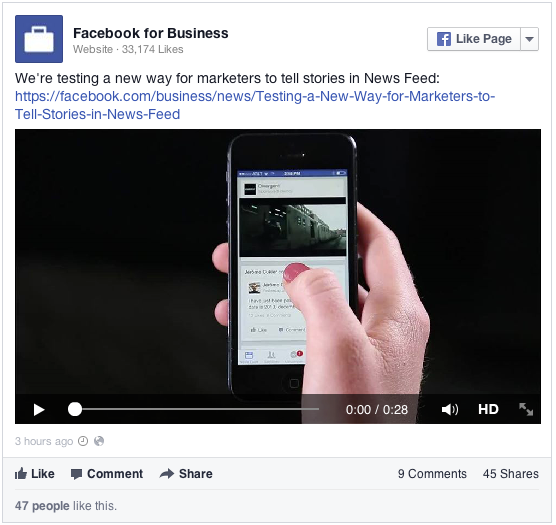Will Social Video Ads Change TV Advertising?
Much has been written about Facebook’s new video product, which is currently being tested by Summit Entertainment and Mindshare in the US. Much of the commentary has been around how much it will cost, whether it will affect users, data plans, and what its impact will be on Facebook’s future profitability. But one area that […]
Much has been written about Facebook’s new video product, which is currently being tested by Summit Entertainment and Mindshare in the US.
Much of the commentary has been around how much it will cost, whether it will affect users, data plans, and what its impact will be on Facebook’s future profitability. But one area that has yet to be highly discussed is what it might do to the traditional TV spot.
Many companies have set their sights on unseating TV’s position as the largest recipient of ad budgets in most major markets; but, Facebook’s new video product is, in some ways, an acceptance that TV is still going to play a central role in many campaigns for some time to come. Advertisers understand how TV ads/video can affect consumer choices, and there are still few things that have as much impact as the mix of sight, sound and motion that video or TV ads bring.
The new Facebook format, as it currently stands, mimics the integration of video into Instagram; videos start playing automatically as the viewer scrolls through the news feed, though unlike Instagram, sound isn’t on by default. Whilst it doesn’t seem likely that the ads will have the same time constraints as videos on Instagram (let alone on Vine or in Twitter’s Amplify product), it strikes me that this sort of brevity might become a creative requirement and one that could have an interesting knock on effect on “traditional” TV ads.
TV Ads Once Worked Just Fine Online
A few years ago, it was quite common to hear people saying that advertisers shouldn’t just take TV ads and put them online. That, of course, was exactly what happened a lot of the time — not just because it was more economical to do so (TV ads cost a lot to make, so it makes sense to use them in as many places as possible), but also because they often worked just fine on platforms like YouTube. After all, whilst most TV ads are 30 seconds, many are 15 seconds, which fits nicely as a pre-roll. And, indeed, many TV ads are much longer and only ever get a full showing online.
However, the rise of video on Instagram, Twitter, Vine and, soon, Facebook may well see shorter formats overtake 15- and 30-second spots as the norm. Twitter’s Amplify product allows advertisers to promote exclusive TV content to interested audiences, wrapped in very short (3-5 second) ads. We are already seeing brands make use of Vine; and, it’s hard to believe that a post-IPO Twitter won’t try to monetise that more directly.
One would imagine that Instagram will roll out video ads now that its initial photo product seems to be doing well (and these are likely to keep to the maximum length of 15, which means many are likely to be much shorter). And, whilst details are scarce on Facebook’s new product, it just makes sense that the content will need to be short; if viewers have to pause over the video for it to keep playing, then it needs to be punchy, and that is likely to correlate quite highly with brevity.
Bite-Sized Ads Become The Norm Everywhere?
As audiences become accustomed to such bite-sized ads, it’s very possible that they will come to expect ads to keep to these sort of lengths, which will create new challenges for brands and their creative partners. Video content will need to be short and snappy, as well as able to create a true emotional reaction on a screen smaller than the Moleskine pad the ad will have been sketched out in. It will need to be something that can tell a story, sell a product and be inherently shareable.
Blog posts at this time of year often lay out the coming trends: mine did exactly that this time last year. But, in the imminent launch of Facebook’s new ad product and the rise of similar units on services such as Twitter and Instagram, we can see the three most important meta-trends all converging:
- Mobile devices are now the pipes through which people access the largest share of their content, and so content needs to “work” on phones, tablets, TVs and screens of all sizes.
- Video is the content that increasingly flows through these pipes; the rise of 4G networks alongside increasingly networked urban areas where wifi is common means that people really will watch TV on a phone.
- Social is the oil that keeps the pipes flowing. Whilst I wrote in the past about the potential challenges of conflicting ecosystems, it seems that enough of these work together for content to move from one to the other.
The phrase “MTV Generation” was often used to describe the people who grew up alongside the TV network and was often shorthand for reduced attention spans. With the maturation of the Facebook generation, TV creative might yearn for the days when 15 seconds wasn’t considered to be too long.
Opinions expressed in this article are those of the guest author and not necessarily MarTech. Staff authors are listed here.
Related stories
New on MarTech
